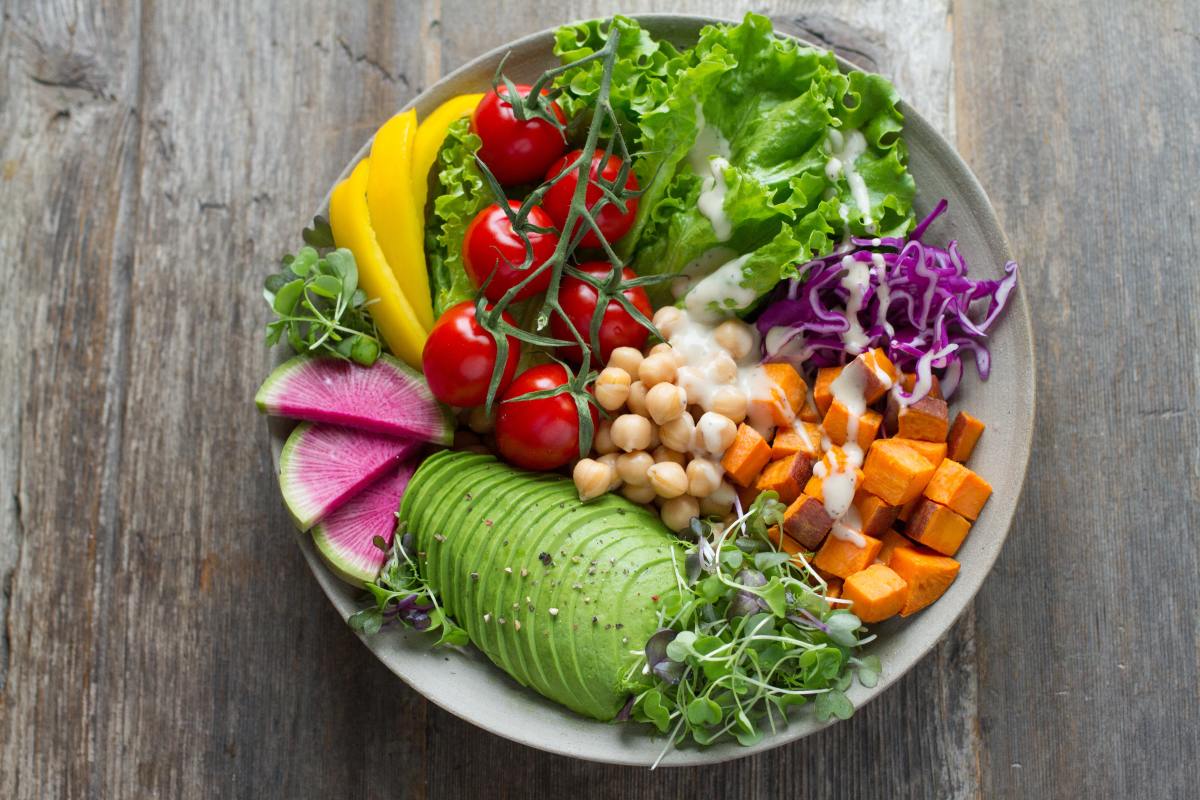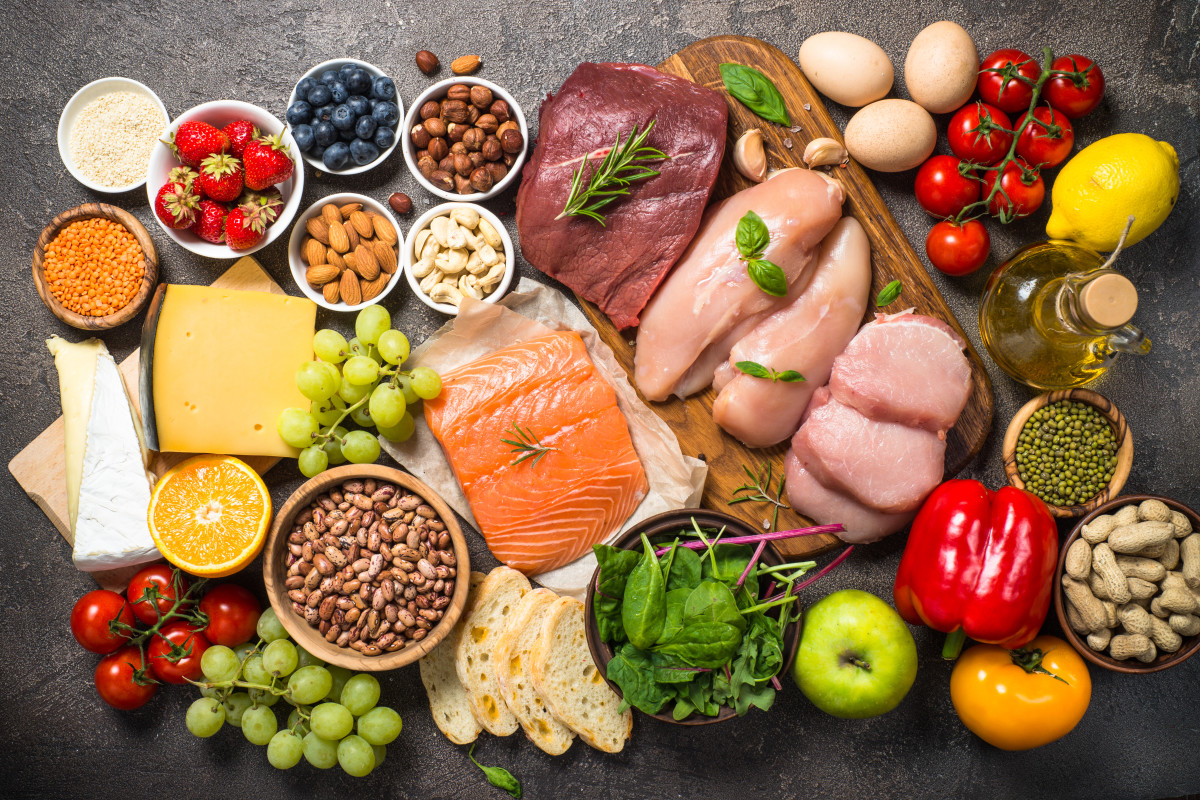Pros & Cons of Today's Popular Diets
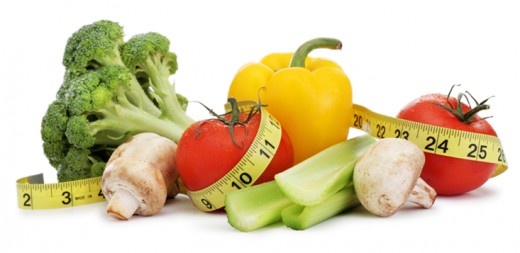
A Quick Note:
Before starting any diet or exercise regimen, consult a doctor, physician, and/or registered dietitian.
Paleo Diet
What it is:
Actually named the 'Paleolithic diet', which refers to the Paleolithic era, or 'Stone Age'. Followers of this diet do not eat processed/packaged foods, only foods that our human ancestors would have eaten.
Examples Of Foods A Person Can Eat On This Diet:
- Chicken
- Broccoli
- Apples
- Avocados
- Beef
Basically, anything that does not come in a package and could have been 'hunted' or 'gathered'.
Pros Of This Diet:
- Weight loss will happen almost immediately because of the restrictive nature of the diet.
- A diet rich in natural foods also eliminates dangerous toxins that come from packaged foods from the body, as well as unnecessary amounts of sodium and fat.
- Natural food-rich diets also leave people feeling more energized.
Cons Of This Diet:
- Science says because of lack of evidence, strong claims of what this diet can do for the body and weight loss cannot be made.
- Sudden changes to a diet can lead to feelings of sickness, irritability, constipation/diarrhea, and other issues as the body tries to adapt to the different nutrients being put in the body.
- The body's addiction to the sugar from processed foods can lead to withdraw symptoms once those are cut off, so talk to a physician before doing so.
Summary:
The Paleo Diet is a raw, natural food diet that eliminates processed foods from the diet. While the benefits of this diet are many, the side affects from transitioning can be hard for some people, so a doctor should be consulted before changing the diet.
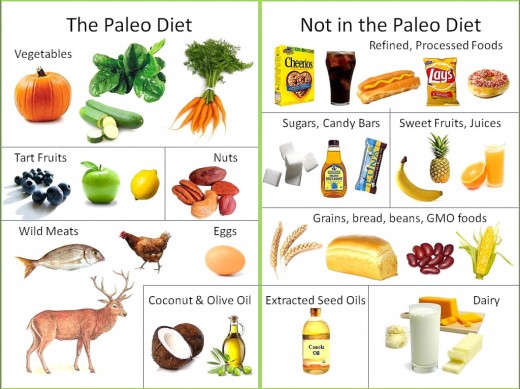
Keto Diet
What it is:
Actually named the 'Ketogenic Diet', which refers to the process of ketosis in the body. Ketosis is when the body produces ketones from burning fat in the liver. It is a high fat, low carb diet that forces the body to use the fat in the body as fuel instead of glucose.
Examples Of Foods A Person Can Eat On This Diet:
- Meats – fish, beef, lamb, poultry, eggs, etc.
- Leafy Greens – spinach, kale, etc.
- Above ground vegetables – broccoli, cauliflower, etc.
- High Fat Dairy – hard cheeses, high fat cream, butter, etc.
- Nuts and seeds – macadamias, walnuts, sunflower seeds, etc.
- Avocado and berries – raspberries, blackberries, etc
- Sweeteners – stevia, erythritol, monk fruit, etc
- Other fats – coconut oil, high-fat salad dressing, saturated fats, etc.
Avoid: bread, pasta, rice, corn, honey, apples, bananas, potaoes, margarine, etc
Pros Of This Diet:
- Weight loss (fat burned as fuel)
- Blood Sugar Control
- Focus (thanks to no spikes in blood sugar from carb-rich foods)
- Increased Energy
- Normalized hunger (fats are more satisfying)
- Helps with Cholesterol & Blood Pressure
- Helps lower insulin levels in the body
- Can help clear up acne
Cons Of This Diet:
- Can develop ketoacidosis (A deadly combination of uncontrolled hyperglycemia, metabolic acidosis, and increased ketone body levels in the blood)
- Keto Flu (flu-like symptoms that come from transitioning to a keto diet)
- You can develop a number of side affects: cramps, constipation, headaches, heart palpitations, fatigue, etc that usually go away after a week or so
Summary:
The 'Keto Diet' is a high fat, low-carb diet that has incredible benefits, but can also have significant side affects.
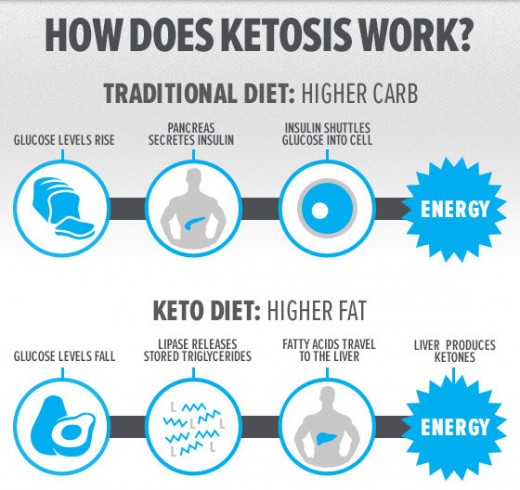
Gluten-Free Diet
What it is:
A diet that excludes the protein, gluten, that comes from wheat and other grains.
Examples Of Foods A Person Can Eat On This Diet:
- Fruits & Vegetables
- Beans, Seeds, & Nuts (in their unprocessed form)
- Eggs & Lean, unprocessed, Meats, Poultry, & Fish
- Dairy products
- Grains allowed: buckwheat, flax, rice, quinoa, amaranth, etc
Flours that have gluten (avoid):
- Enriched flour with added vitamins and minerals
- Farina, milled wheat usually used in hot cereals
- Graham flour, a course whole-wheat flour
- Self-rising flour, also called phosphate flour
- Semolina, the part of milled wheat used in pasta and couscous
Also Avoid:
- Wheat
- Barley
- Rye
- Triticale (a cross between wheat and rye)
- Oats (because of possible cross contamination with wheat)
- French fries
- Cakes
- Imitation meat or seafood
- Cereal
- Salad Dressings/Sauces
- Beer, ale, stout, etc
Pros Of This Diet:
- Less symptoms that are caused by gluten-intolerance
- Weight loss due to cutting out bread, pasta, processed food, etc
- Increase in food label awareness
- Introduces higher quality grains into the diet
Cons Of This Diet:
- Reduced carbohydrate intake due to lack of education on nutrients
- Lack of fiber, which can lead to digestive issues
- Possible weight gain from eating gluten-free products (high sugar and fat)
- Possible weight gain as the intestinal track recovers and begins to absorb nutrients properly
Special Note: In most cases, if there is a high sensitivity to gluten, eating "gluten-free" products is not beneficial and can lead to reactions. The best thing to do if there is an intolerance is to have a diet full of natural whole foods and cut out processed foods along with the gluten products all together.
Summary:
The 'Gluten-Free Diet' is usually followed by people who suffer from a sensitivity or intolerance to gluten, found in most wheat products, but can offer benefits to those who want to lose weight as well. Digestive issues can be a problem due to lack of fiber, so research should be done to find other sources.
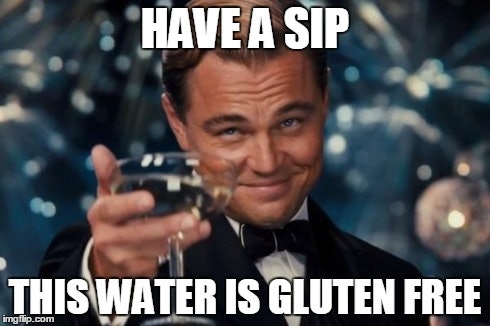
Intermittent Fasting Diet
What it is:
A diet pattern where a person eats during certain hours and skips meals during other hours.
There are a few different ways to go about it:
- 12:12 (Eat during 12 hours; fast for 12 - best for beginners)
- 20:4 (Fast during 20 hours; eat during 4)
- 16:8 (Fast during 16 hours; eat during 8)
- 5:2 (Eat whatever for five days; eat more controlled/smaller amounts of food for 2)
Examples Of Foods A Person Can Eat On This Diet:
On this diet, anything can be eaten during the allotted hours/days, though it is best to avoid high amounts of carb-rich foods because of the lack of control in blood-sugar spikes. That makes it harder to stick to the fasting hours. Be sure to drink water throughout the day.
Recommended Foods:
- Avocado
- Fish
- Cruciferous Vegetables (broccoli, cauliflower, etc)
- Potatoes
- Beans & Legumes
- Probiotics (to help with any digestion issues)
- Berries
- Eggs
- Nuts
- Whole grains (in small amounts)
Pros Of This Diet:
- Weight loss
- Simplifies the day (only eating during certain hours)
- Requires less time & money to do
- Promotes stronger insulin sensitivity and increased growth hormone production (great for weight loss and muscle gain)
Cons Of This Diet:
- Feelings of grumpiness during the first few days (due to transitioning)
- Feelings of hungriness during fasting hours (goes away after the body gets used to the diet)
- Not recommended for people who take medications for blood sugar, people who love carbs, people who suffer from or who have suffered from eating disorders, and pregnant women
- Because the body is transitioning, there can be issues in digestion and energy levels
Summary:
The Intermittent Fasting Diet can be changed to fit personal preference and goals, but eliminating meals from a diet can be risky, and the side effects can be hard for some people to handle. Start off slow so the body can transition easier, and be sure to drink plenty of water during the day.
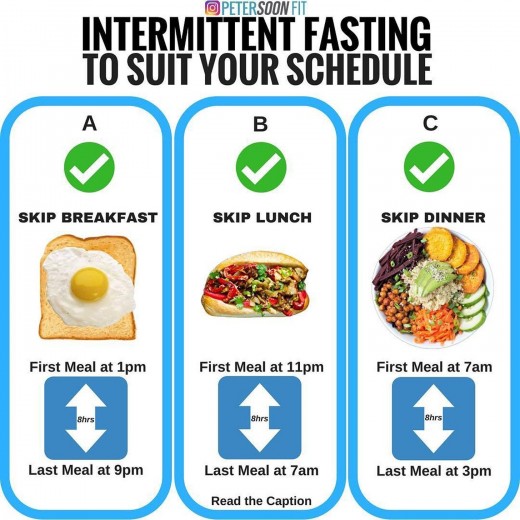
Vegan/Vegetarian Diet
What it is:
A diet that excludes animal products, though depending on the type of vegetarian diet, sometimes includes dairy and/or eggs. Veganism is seen as the strictest form of vegetarianism because the diet excludes all animal products and byproducts.
There Are Different Types Of Vegetarians:
- Lacto-Ovo Vegetarians: Exclude meat from their diet, but consume eggs and dairy
- Lacto Vegetarians: Exclude meat and eggs from their diet, but consume dairy
- Ovo Vegetarians: Exclude meat and dairy from their diet, but consume eggs
Examples Of Foods A Person Can Eat On This Diet:
Basically, as long as it's not meat, or made with animals fats, it is acceptable to eat on this diet. Vegans also do not eat eggs, consume dairy, and do not use anything made from animals.
- Vegetables and fruit
- Tofu
- Pasta, bread, rice, etc.
- Oils that are not animal fat based
- Vegetarian alternatives to meat (Veggie burgers for example)
- Vegans also avoid these ingredients: gelatin, honey, carmine, pepsin, shellac, albumin, whey, casein, and some forms of vitamin D3.
Pros Of This Diet:
- These diets can can contain high amounts of vitamins, minerals, fiber and healthy plant compounds that many people miss by not eating enough vegetables and fruits
- Excluding animal fat can lead to weight loss
- These diets are low in saturated fat and cholesterol
- The vegan diet is often followed because of a person's stance on animal rights and the enviornment
- Vegetables and fruits are high in antioxidants
Cons Of This Diet:
- Poorly planned vegetarian/vegan diets can cause serious deficiencies in nutrients such as iron, calcium, zinc and vitamin D
- Vegans in particular can be lacking in vitamin B12 and long-chain omega-3 fatty acids, found in animal products
- Supplements sometimes have to be taken because of the exclusion of meat, which contains some nutrients not found in plants
- Sticking to such a strict diet when following veganism can make it hard when eating out or buying groceries. Vegetarianism is only slightly easier to handle as society as become more accommodating
- Many common products contain animal-derived products, so read the labels carefully if following veganism
- Proper protein replacements need to be found
- Non-meat substitutes can be high in sodium and preservatives
Summary:
A vegan or vegetarian diet can be extremely beneficial for a person's health, though not eating meat, poultry, or fish can lead to serious deficiencies. Careful planning should be done before following either diet fully. Slowly transitioning into the diets can be more beneficial.
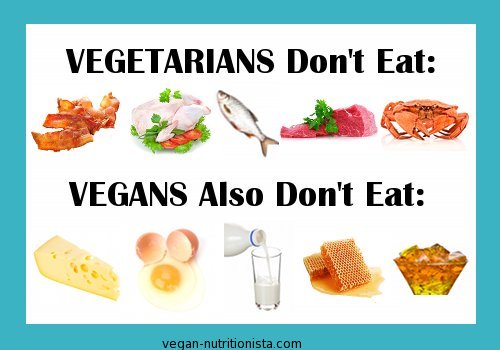
DASH Diet
What it is:
DASH stands for Dietary Approaches to Stop Hypertension. This diet is followed to promote heart health and general well-being by not eating food high in fats or sodium.
Examples Of Foods A Person Can Eat On This Diet:
This diet allows for many types of food eaten in certain amounts during the day/week. Generally, anything low in saturated and trans fats and sodium, as well as being high in nutrients such as potassium, calcium, magnesium, fiber, and protein.
- Vegetables, fruits, and whole grains
- Fat-free or low-fat dairy products, fish, poultry, beans, nuts, and vegetable oils
- Foods that are high in saturated fat, such as fatty meats, full-fat dairy products, and tropical oils such as coconut, palm kernel, and palm oils should be limited or excluded
- Sugar-sweetened beverages and sweets should also be limited or eliminated
Pros Of This Diet:
- Helps lower high blood pressure
- Weight loss can happen because of cutting out fatty foods and sugary drinks
- Eating nutrient-dense foods such as lean meat and vegetables can leave a person feeling fuller longer, leading to weight loss
- Flexible calorie plans allow for customization
Cons Of This Diet:
- The foods recommended for this diet can me more expensive
- Eating out can be made more difficult because of restaurants serving fatty salty foods
- Making the meals that fit this diet are more time-consuming than any prepackaged diet
Summary:
The DASH diet focuses on healthier foods to help lower high blood pressure. The DASH diet is perfect for anyone looking to be healthier, but not necessarily looking to lose weight.
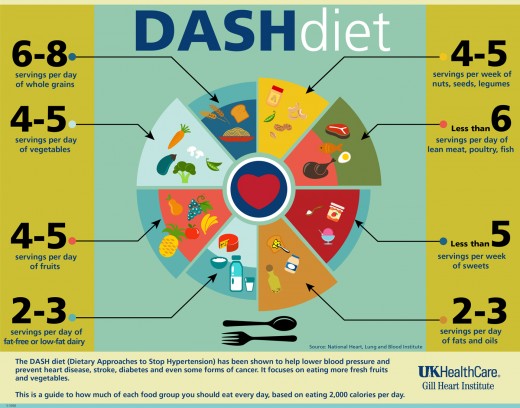
Flexitarian Diet
What it is:
The Flexitarian Diet is a diet that consists of eating more non-meat meals for health and moral reasons. Similar to being vegetarian, only meat is allowed on occasion. This diet is extremely flexible, and can be seen as a stepping stone towards being fully vegetarian or vegan.
Examples Of Foods A Person Can Eat On This Diet:
On this diet, anything goes. Nutrient dense foods should be consumed over processed foods in order for it to be beneficial. Meat is consumed to a far lesser degree than most people eat, though not totally cut out of the diet. Instead of eating meat for every meal, for example, a person might have chicken twice a week, or only at dinner time.
Pros Of This Diet:
- Much easier to follow than vegetarian/vegan diets
- Weight loss can occur
- Being flexible allows it to be customized to specific tastes and goals
- Higher consumption of nutrients found in plants
Cons Of This Diet:
- Much like a vegetarian diet, supplements may be needed
- Finding non-meat protein options can be time consuming for people who are inexperienced
- The diet's lack of structure can lead to frustration for people who want to exclusively lose weight
Summary:
The Flexitarian Diet is often seen as the first step to going vegetarian or vegan, substituting more non-meat options in more meals. This diet is perfect for anyone not wanting to fully follow the vegetarian diet, or who want to slowly transition into not having meat.
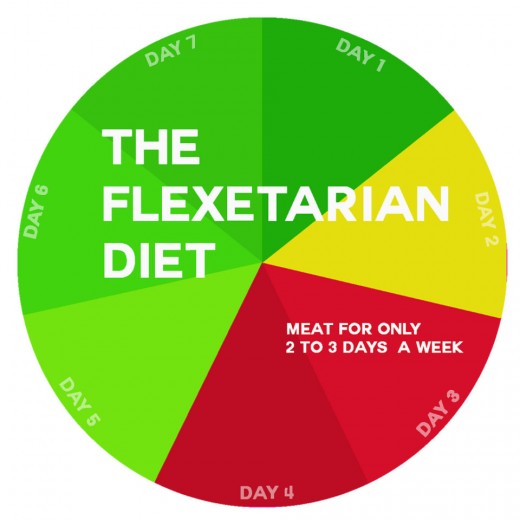
Low-FODMAP Diet
What it is:
A Low-FODMAP diet is one that focuses on removing high-FODMAP foods from the diet and introducing low-FODMAP foods. The goal of this diet is to cure irritable bowel syndrome.
FODMAPs are short chain carbohydrates that are poorly absorbed in the small intestine.
Examples Of Foods A Person Can Eat On This Diet:
- Low-lactose or lactose free products (Colby cheese, almond milk, sorbet from low-fructose fruits)
- Foods low in fructose (Blueberries, small banana, dark chocolate)
- Low Fructans/GOS* (Butternut squash, rice, almonds)
- Low Polyols (Cantaloupe, avocado, pure maple syrup)
Pros Of This Diet:
- Relieves IBS symptoms, such as bloating and excessive gas
- Forces conscious food choices, leading to healthier habits
Cons Of This Diet:
- Can be difficult to follow because of having to eliminate a lot of options
- Symptoms can come back if a person does not keep following it
Summary:
A Low-FODMAP diet is typically followed by people looking to relieve IBS symptoms. The diet can be extremely strict and hard to follow, and because of the nature of the diet (eliminating and slowly reintroducing foods), a doctor or physician should be consulted first.
*GOS stands for: galacto-oligosaccharides
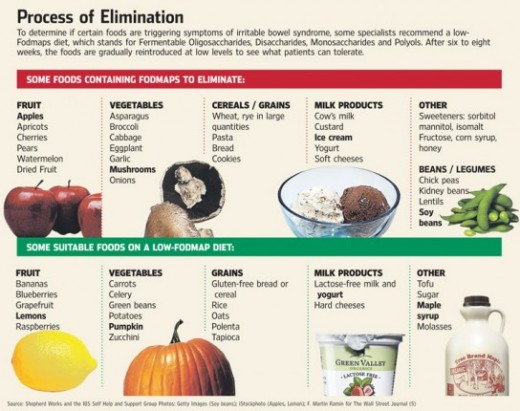
Which Diet Sounds The Most Interesting To You?
Final Thoughts:
In general, these diets can all be extremely beneficial to follow. Like many things, diets are not one size fits all, so talking to a physician and/or registered dietitian before changing anything can be extremely beneficial. Some bodies have different needs, and those need to be taken into consideration when deciding what to eat. Food sensitivities, deficiencies, and many other factors can dictate what can be eaten,
Also, as a reminder, a diet should not be seen as a quick fix to weight loss. A diet should be seen as a lifestyle change to improve ones health and life. Eating good, natural foods, no matter the fancy diet name, is much better for the body than eating anything packaged. The diets above were very similar in terms of what they recommend a person consume while following it, which should definitely say something!
Eat more unprocessed foods, consume less added sugar, drink more water, work to become more active each day and there will be great benefits!
© 2018 Caitlyn Booth







